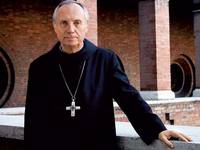Abortion has been an albatross around the Democratic Party’s neck since at least 1980,
 helping to keep it out of the White House for all but eight of the last 28 years.
helping to keep it out of the White House for all but eight of the last 28 years.
Will 2008 be any different?
Once again, the Democrats have tied their fortunes to abortion rights, hoping to compensate with a historic outreach effort to Catholic voters. But this may simply lend empirical support to Einstein’s adage that insanity is doing the same thing over and over and expecting different results.
Let’s start at the end of the 1970s, when the abortion lobby’s influence over the Democratic Party grew quickly in the decade following Roe v. Wade. That influence doomed the candidacy of a strongly pro-life Sargent Shriver in 1976, and produced a platform plank that year that opposed any effort to overturn Roe.
When it became clear that pro-life candidates would lose financial support and even become targets in Democratic primaries unless they switched sides, most of them did. But the party paid a heavy price.
Catholics, once among the most reliable members of the Democratic coalition, took a hike in 1980 and gave Jimmy Carter only 42 percent of their votes. Putting pro-choice Catholic Geraldine Ferraro on the 1984 ticket only accelerated the erosion, leaving Democrats with just 39 percent of Catholics.
By 1988, Joe Biden and Dick Gephardt became the last of the big-name Catholics in the party to flip to pro-choice. Over the intervening two decades, the party has held fast to an uncompromising stance in favor of abortion rights, and only once – in 1996 – has the Democratic presidential candidate’s share of the Catholic vote exceeded 50 percent.
Bill Clinton, who understood Americans’ discomfort with abortion better than most in his party, engineered the inclusion of a platform plank stating that abortion should be “safe, legal and rare,” a departure from the abortion-as-a-public-good posture of abortion rights advocates. Clinton connected just enough with Catholic Democrats to bring them briefly back to the fold.
But it didn’t last.
Putting John Kerry, a pro-choice Catholic, at the top of the ticket in 2004 actually made matters worse, since it gave the abortion issue a higher profile during the campaign.
Now Barack Obama, the most uncompromising supporter of abortion rights since Michael Dukakis, has picked a pro-choice Catholic as his running mate. Upon arriving in Denver for the nominating convention, Joe Biden quickly discovered that the city’s archbishop had declared him persona non grata in the Communion line at Sunday Mass.
When Biden and House Speaker Nancy Pelosi mangled Catholic teaching on abortion on “Meet the Press” they earned a swift and public rebuke from America’s bishops. And so the Obama-Biden ticket will carry the same burden as every Democratic ticket of the past three decades.
Polling data seem to indicate on-again, off-again support for Obama among Catholics – pollster John Zogby tracked his support among Catholics at 47 percent in July, then down to 36 percent in August, and now back up to 45 percent as of Monday (Oct. 6), just 2 points behind John McCain.
The 2008 party platform is not exactly designed to win over pro-life Catholics: “The Democratic Party strongly and unequivocally supports Roe v. Wade and a woman’s right to choose a safe and legal abortion, regardless of ability to pay, and we oppose any and all efforts to weaken or undermine that right.”
Pro-life apologists for the party, led by “God’s Politics” author Jim Wallis and joined lately by Catholic law professors Doug Kmeic and Nicholas Cafardi, have tried to portray the abortion plank as a “reaching out” to pro-lifers, based on a sentence saying the party “recognizes” that social policies can help “reduce the need for abortions.” Many serious Catholics would argue there’s never a “need” for any abortion.
Kmeic conceded that the Democratic plank “still falls short of the Catholic ideal,” a remarkable understatement. The fiercely pro-abortion Catholic Frances Kissling more accurately called the plank “a slap in the face to Kmeic’s Catholic ideal.”
For Catholic Democrats, there’s a line in Coleridge’s “Rime of the Ancient Mariner” that sums it up nicely:
“Instead of the cross, the Albatross
About my neck was hung.”
(Carl Anderson is the supreme knight of the Knights of Columbus, the world’s largest Catholic fraternal organization.)
Copyright (c.) 2008 Religion News Service























